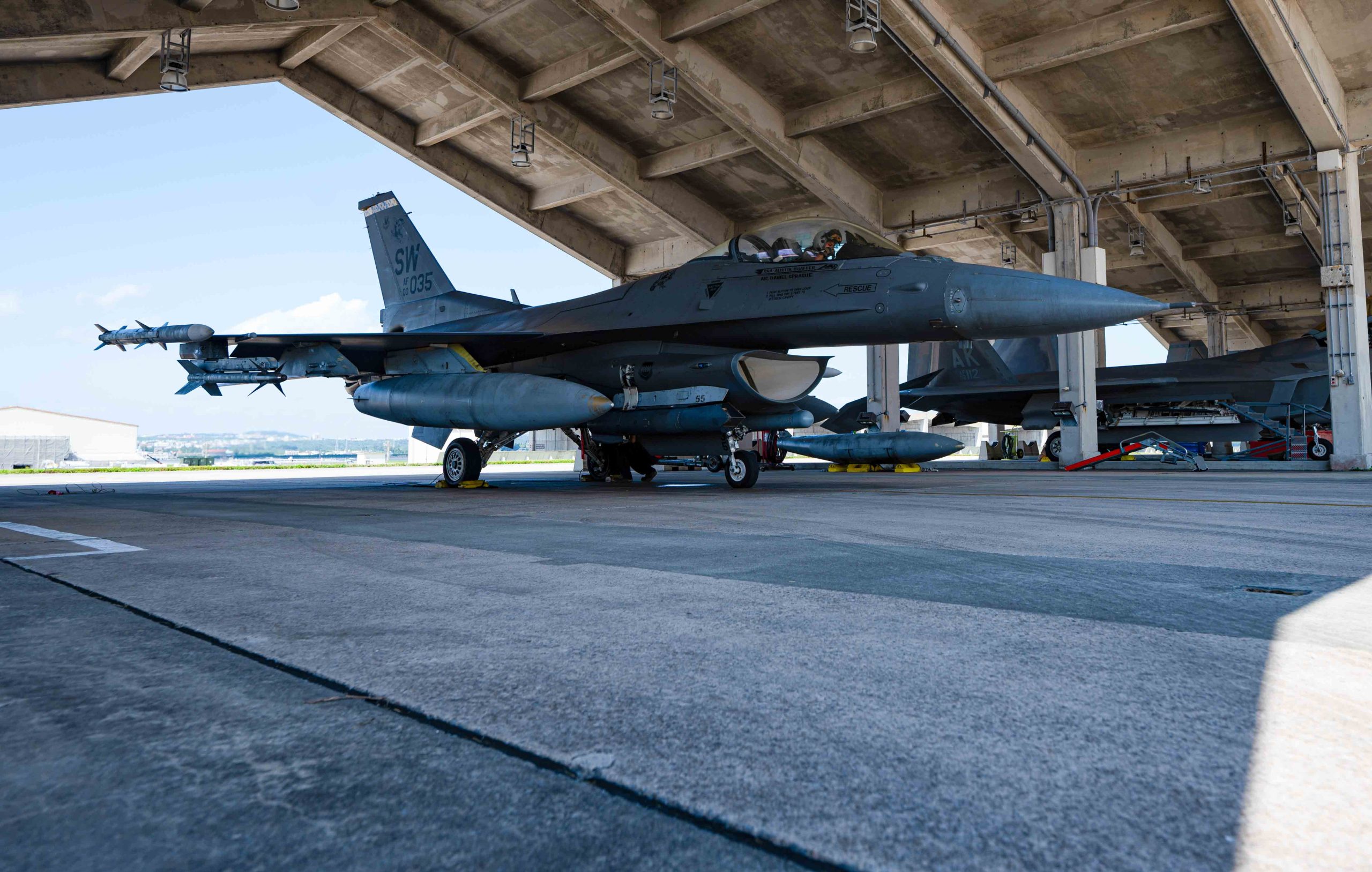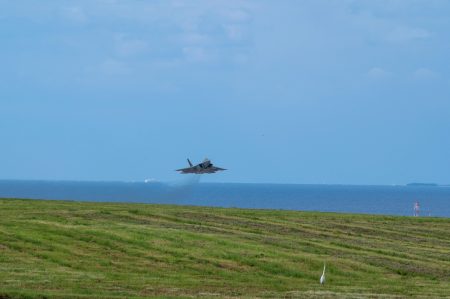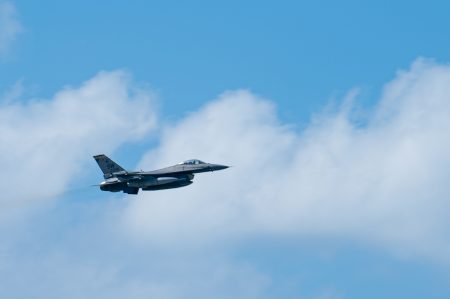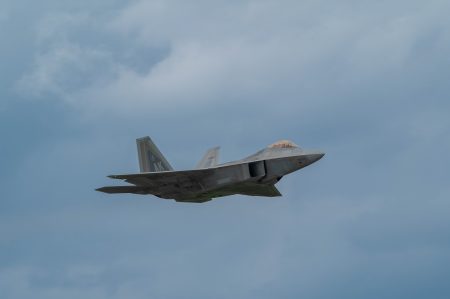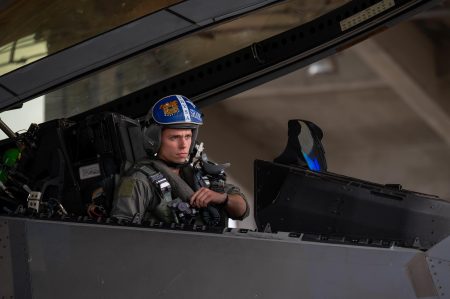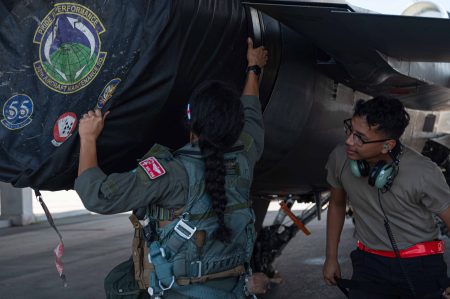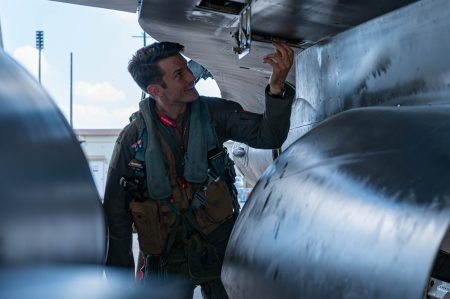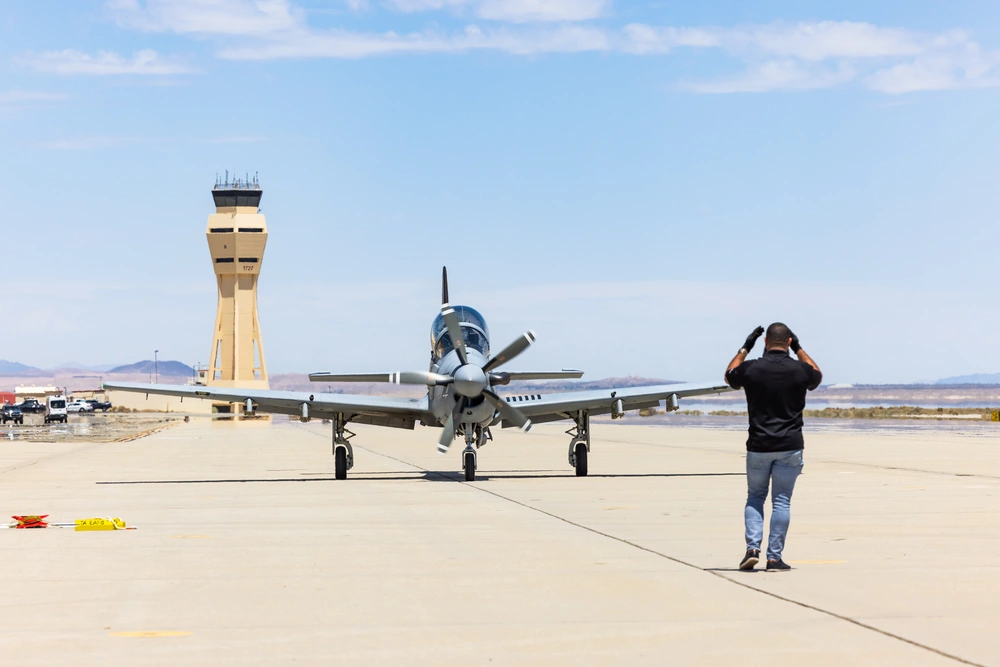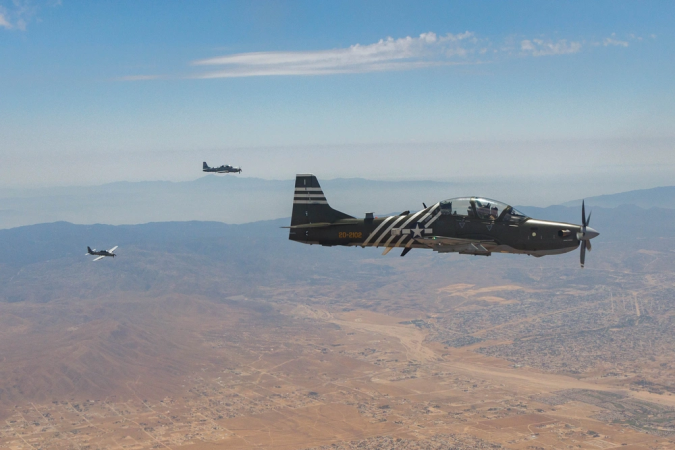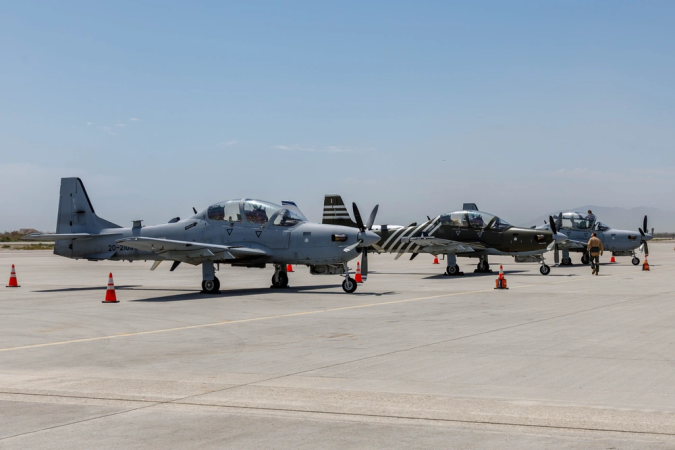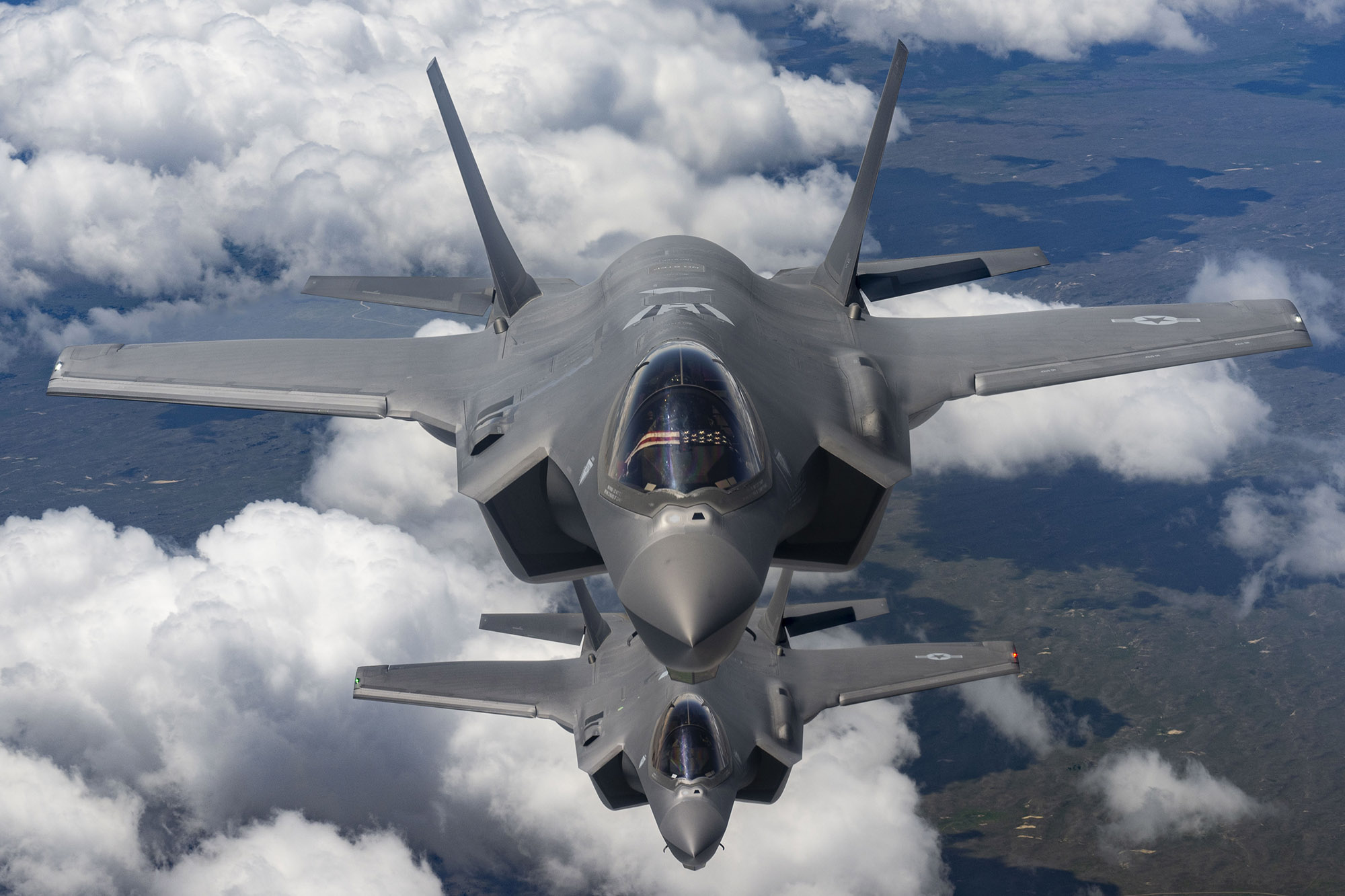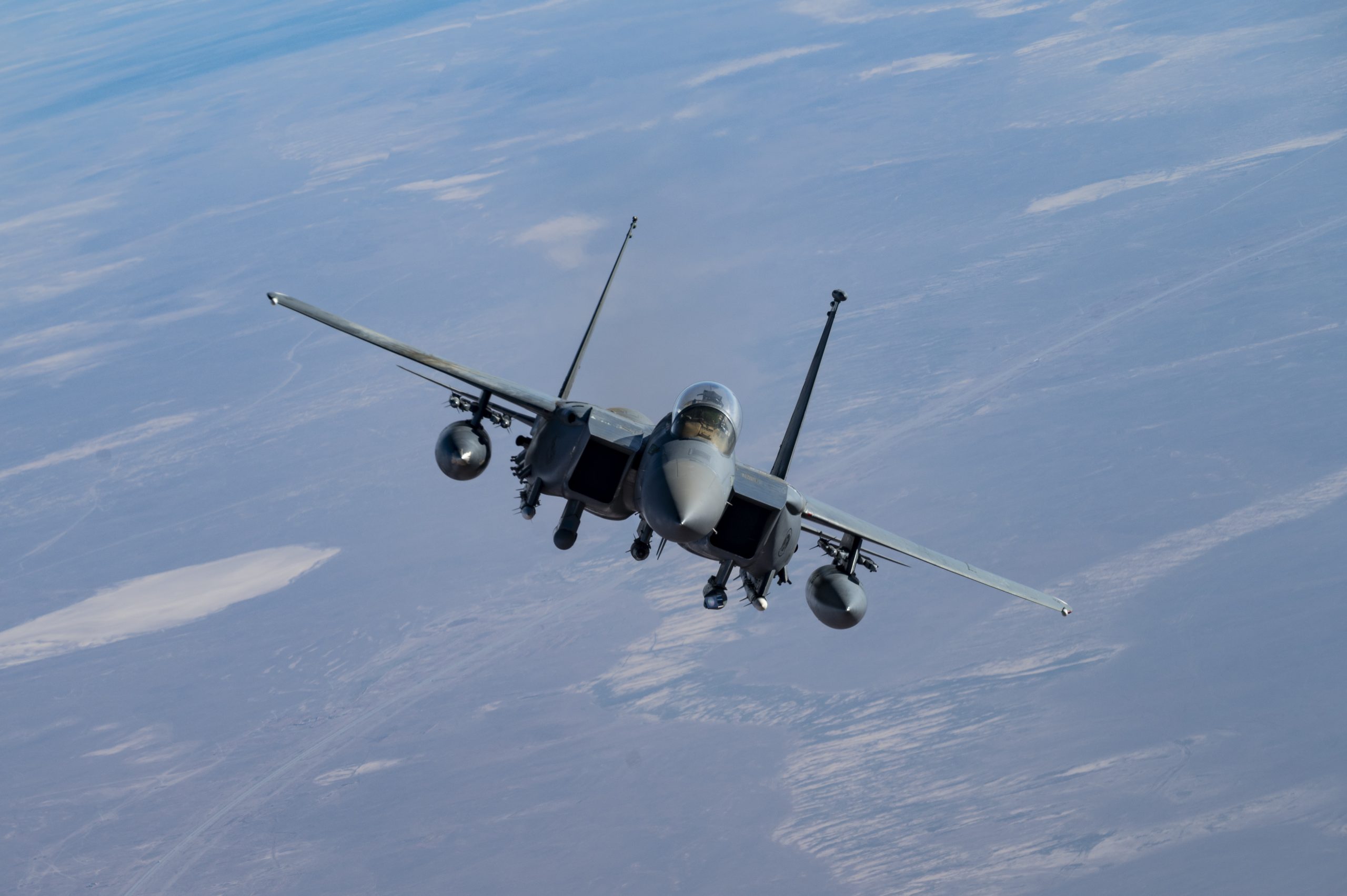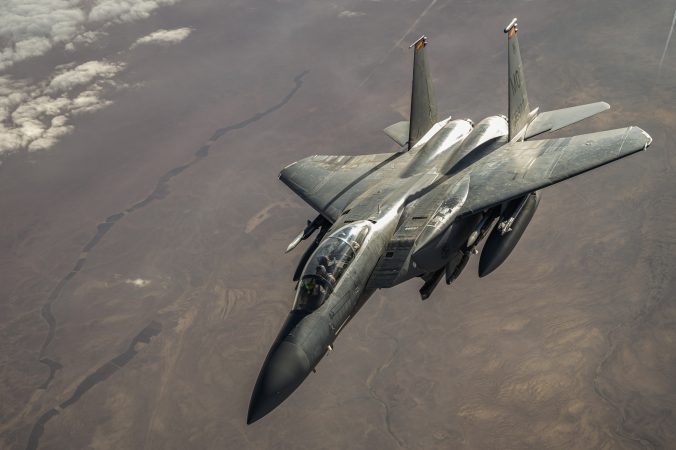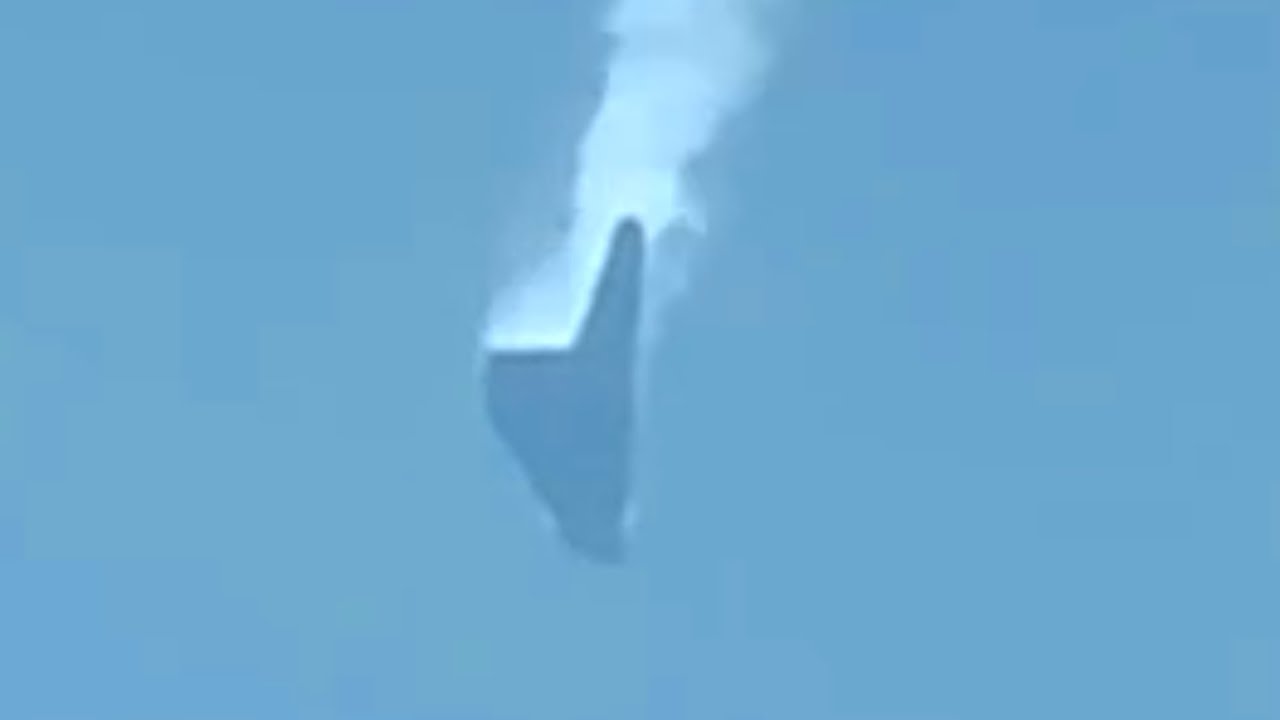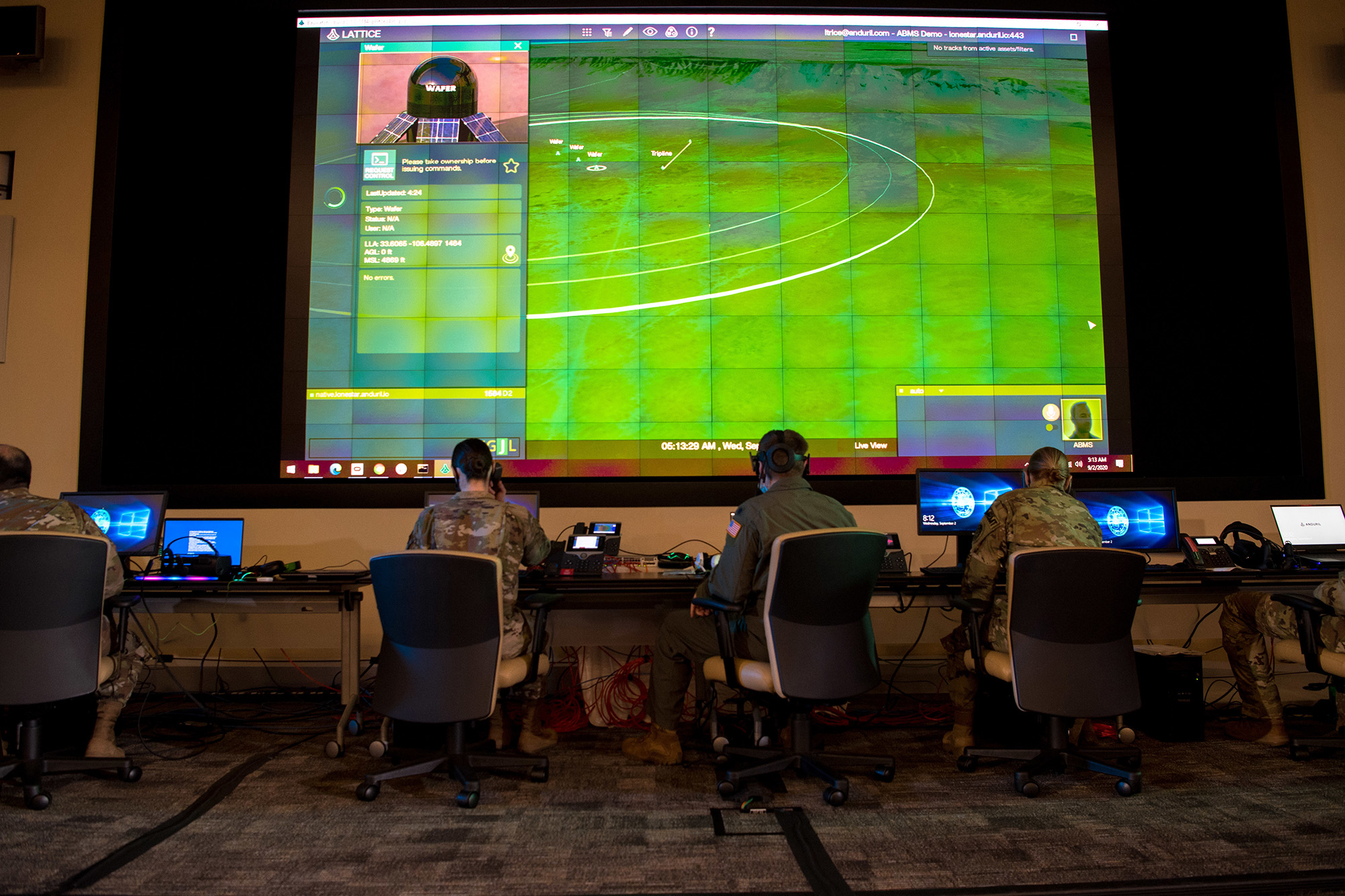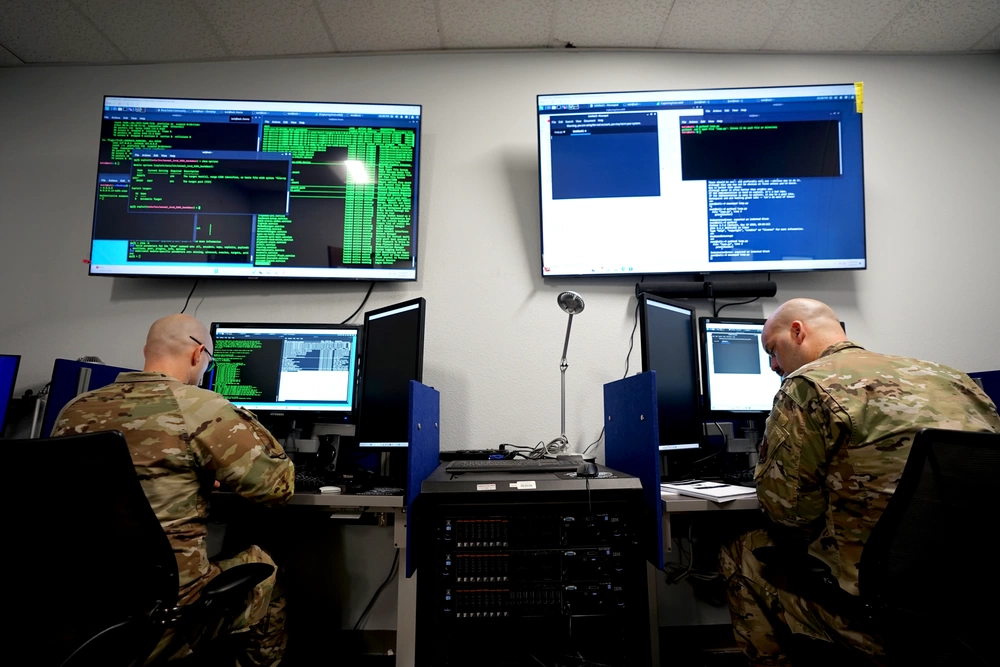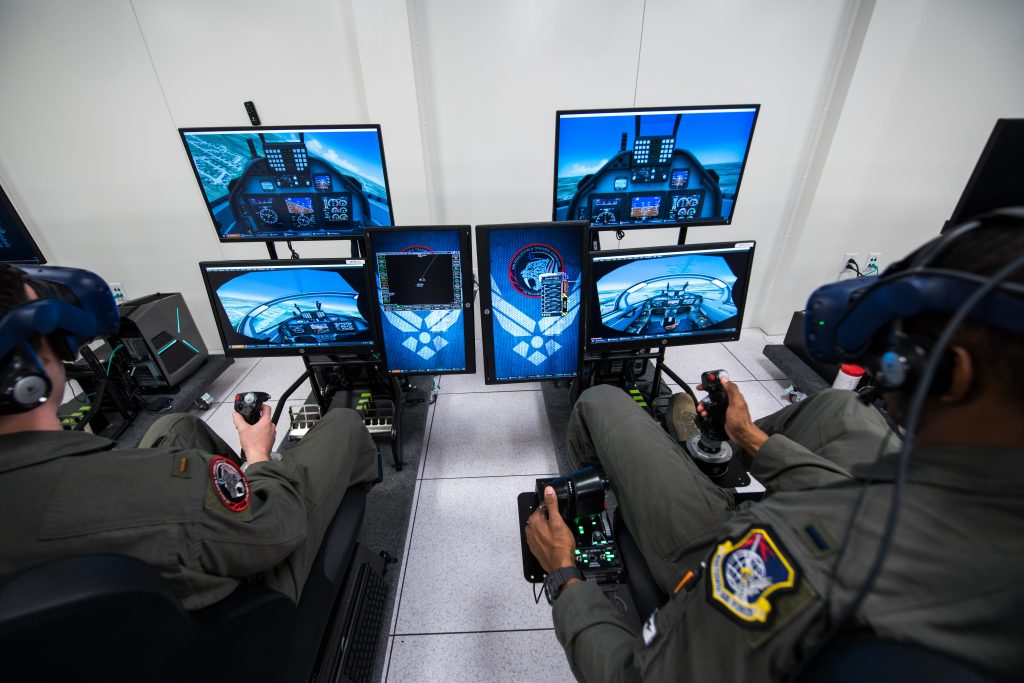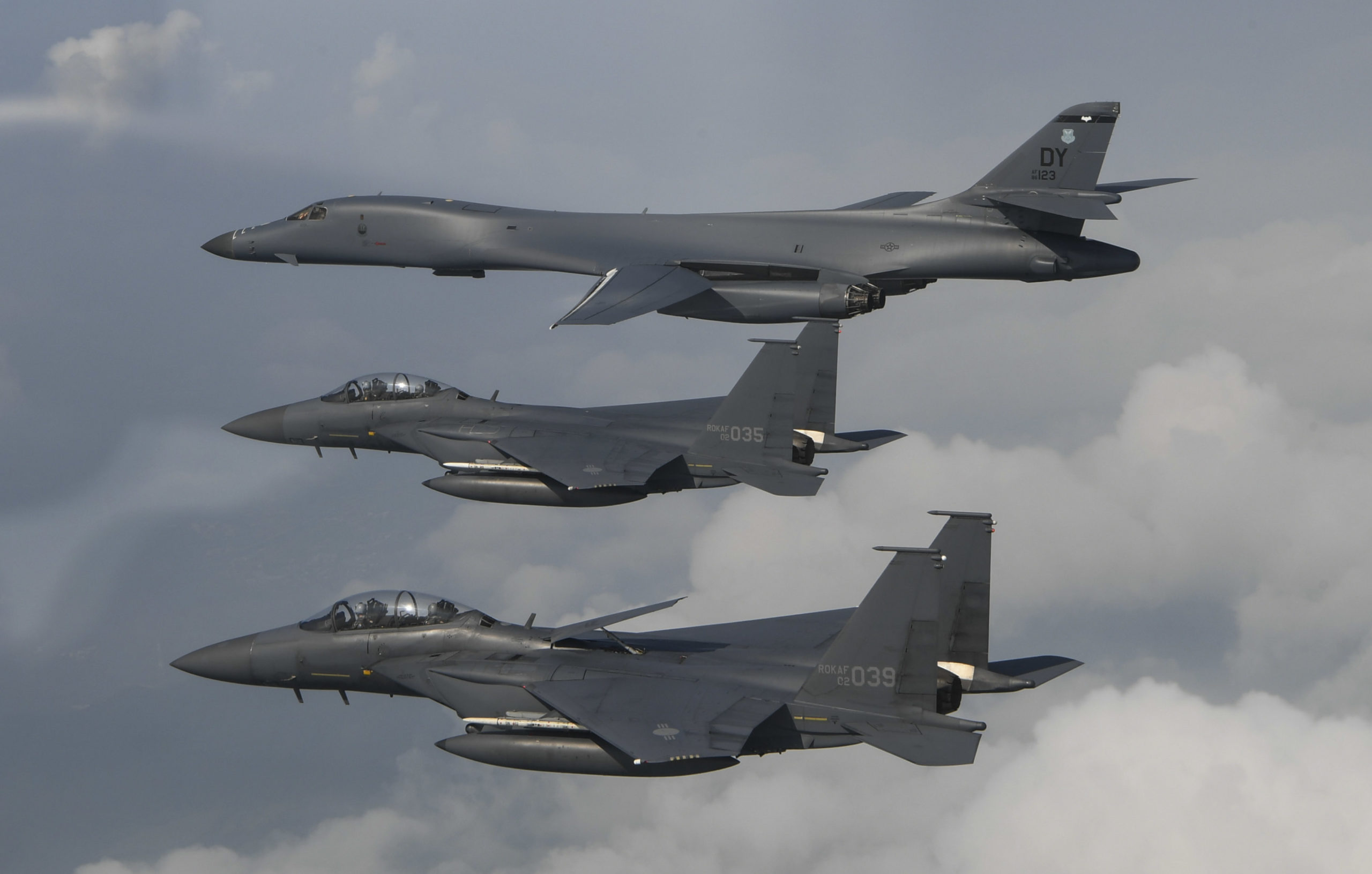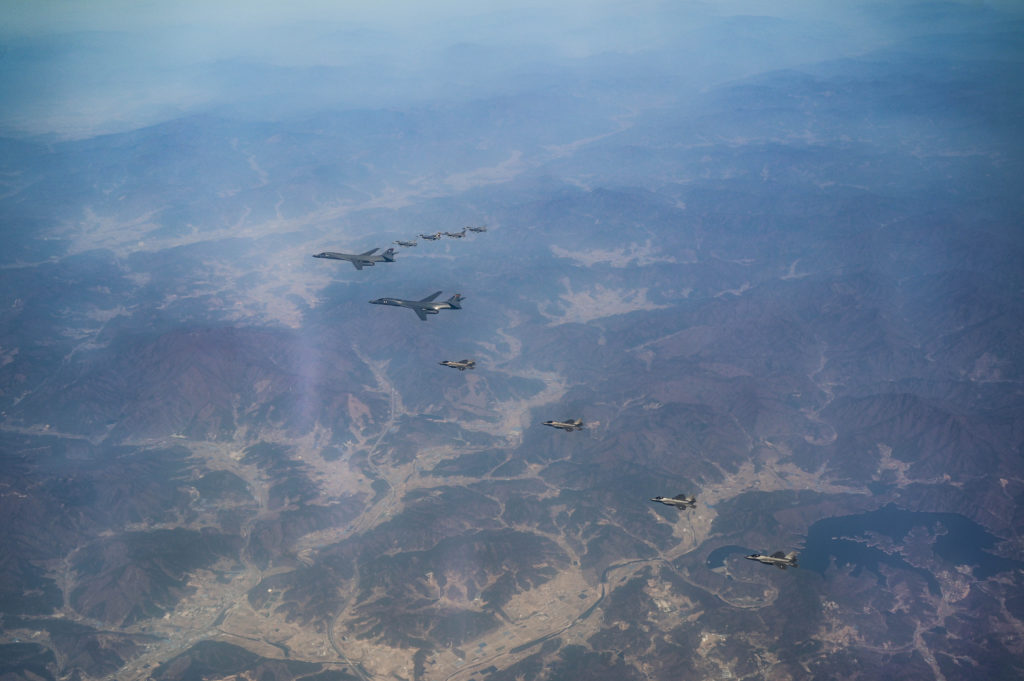Fresh F-22 and F-16 fighter jets arrived at Kadena Air Base, Japan, this past weekend as the key Pacific base phases out its few remaining F-15C Eagles.
The F-16s are from the 77th Expeditionary Fighter Squadron out of Shaw Air Force Base, S.C. The F-22s are from the 525th Expeditionary Fighter Squadron out of Joint Base Elmendorf-Richardson, Alaska.
In addition to the incoming fighters, F-22s from the 27th Expeditionary Fighter Squadron out of Joint Base Langly-Eustis, Va., remain at the base.
Kadena continues to hold onto some F-15Cs—a staple of the installation since the late 1970s—which are nearing the end of their lifespan.
Stars and Stripes first reported the new fighters’ arrival. A spokeswoman for Kadena’s 18th Wing confirmed their presence to Air & Space Forces Magazine and also confirmed that “there are F-15C Eagles remaining at Kadena as they wait to be phased out.”
Kadena’s aging F-15Cs have been slowly leaving the base for months following the Air Force’s decision in October 2022 to phase the fleet out and temporarily replace it with a rotation of fourth- and fifth-generation fighters.
The 18th Wing has consistently refused to disclose how many F-15Cs remain at Kadena, citing operational security concerns. In August, however, it did note the departure of a four-ship of Eagles as a “milestone” in the drawdown.
Service officials have declined to say when the last F-15C will leave.
Kadena is expected to eventually welcome 36 F-15EX fighters as the permanent replacement for the F-15Cs, part of a larger force restructuring on Japan that will see F-35s go to Misawa Air Base. The new F-15EXs will boast additional weapon stations, new electronic warfare suites, fly-by-wire flight controls, a far more powerful set of processors, and new cockpit displays. The notional date for fully equipping Kadena with the F-15EX is 2026.
“There will be some learning as it comes to putting a new platform into these environments and we’ll probably learn a few lessons about the capabilities of the F-15EX,” Pacific Air Forces commander Gen. Kevin B. Schnider told Air & Space Forces Magazine last month. “I don’t think it’s going to be a significant transition at all to bring a new platform into Kadena just because the people that are operating that platform already know the business.”
The Air Force’s closest base to the island of Taiwan, Kadena is considered a key strategic location for the U.S. in its competition with China and has hosted a continuous cycle of fighters in the past two years. Most recently, F-22s from Joint Base Pearl Harbor-Hickam, Hawaii, departed after a six-month rotation at the base.
The Air Force’s fighter fleet as a whole faces heavy demand as of late. Additional F-15s, F-16s, and A-10s are deploying to the Middle East amid rising tension between Israel and Iran, while squadrons of jets are extending their deployments to bolster U.S. airpower in the region.
